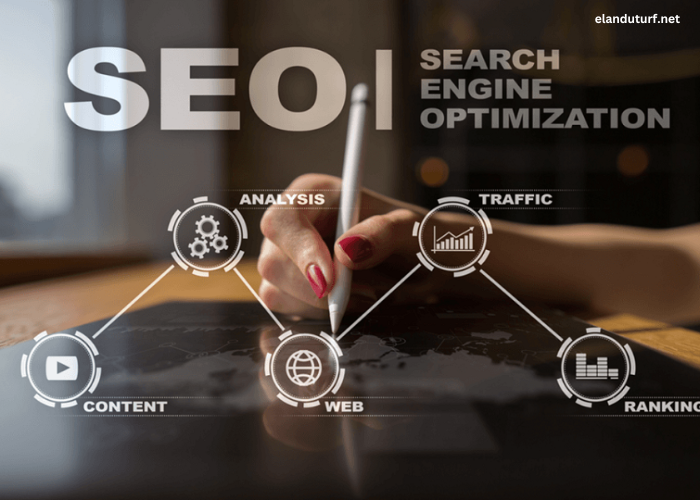In today’s rapidly changing business landscape, organizations are faced with the challenge of sustaining growth while adapting to evolving market dynamics. Strategic growth, a systematic approach to identifying and leveraging market opportunities, has become imperative for businesses aiming to thrive in competitive environments. This article explores the concept of strategic growth, its significance, and how organizations can effectively navigate market opportunities ahead.
Understanding Strategic Growth
Strategic growth refers to the process of identifying, planning, and implementing strategies that enable an organization to expand its market presence, increase revenue, and achieve sustainable competitive advantage. It goes beyond mere sales growth; it involves a comprehensive analysis of market trends, customer needs, and organizational capabilities to make informed decisions about resource allocation, product development, and market entry.
The Importance of Strategic Growth
- Sustainability: In an era of disruption and uncertainty, businesses that prioritize strategic growth are better positioned to weather economic fluctuations and competitive pressures. By diversifying revenue streams and expanding into new markets, organizations can reduce their reliance on a single source of income.
- Competitive Advantage: Strategic growth allows companies to differentiate themselves from competitors. By identifying unique value propositions and addressing unmet customer needs, organizations can create a loyal customer base and establish a stronger market presence.
- Innovation: Growth often requires innovation, whether through product development, process improvement, or exploring new business models. Organizations that embrace strategic growth are more likely to foster a culture of innovation, leading to enhanced product offerings and improved operational efficiencies.
- Long-Term Vision: Strategic growth encourages businesses to think beyond short-term gains. By setting long-term objectives and aligning resources accordingly, organizations can ensure that they are not just reacting to market changes but proactively shaping their futures.
Analyzing Market Opportunities
To navigate market opportunities successfully, organizations must adopt a structured approach to analysis. This involves conducting market research, evaluating competitive landscapes, and understanding customer behavior. Here are the key components of market opportunity analysis:
Market Research
Market research is the foundation of strategic growth. It involves gathering data on industry trends, customer preferences, and emerging technologies. Businesses can utilize qualitative and quantitative research methods, such as surveys, focus groups, and data analytics, to gain insights into market dynamics.
Competitive Analysis
Understanding the competitive landscape is crucial for identifying market opportunities. Businesses should analyze competitors’ strengths, weaknesses, market positioning, and strategies. This analysis enables organizations to identify gaps in the market and potential areas for differentiation.
Customer Insights
Gaining a deep understanding of customer needs and preferences is essential for strategic growth. Organizations should segment their customer base and create detailed buyer personas to tailor their products and marketing strategies effectively. Engaging with customers through feedback mechanisms and social media can provide valuable insights into evolving preferences.
SWOT Analysis
A SWOT (Strengths, Weaknesses, Opportunities, Threats) analysis is a valuable tool for assessing an organization’s internal capabilities and external environment. By identifying strengths and weaknesses, businesses can leverage their resources effectively. Simultaneously, recognizing opportunities and threats in the market allows for proactive planning and risk mitigation.
Developing a Strategic Growth Plan
Once organizations have conducted a thorough market opportunity analysis, they must develop a strategic growth plan that outlines specific objectives, initiatives, and metrics for success. Here are the key components of a strategic growth plan:
Clear Objectives
Setting clear and measurable objectives is crucial for guiding strategic growth efforts. Objectives should align with the organization’s overall mission and vision while being specific, achievable, relevant, and time-bound (SMART).
Resource Allocation
Effective resource allocation is essential for executing the strategic growth plan. Organizations must assess their current resources, including human capital, financial assets, and technology, to determine how they can be optimally utilized to achieve growth objectives.
Strategic Initiatives
Based on the identified opportunities, organizations should outline specific strategic initiatives that will drive growth. These initiatives may include product launches, market expansions, partnerships, or mergers and acquisitions. Each initiative should be backed by a well-defined business case and projected outcomes.
Performance Metrics
Establishing key performance indicators (KPIs) is critical for measuring the success of the strategic growth plan. Organizations should track metrics such as revenue growth, market share, customer satisfaction, and return on investment (ROI) to assess progress and make data-driven adjustments as needed.
Navigating Challenges in Strategic Growth
While pursuing strategic growth, organizations may encounter various challenges. Here are some common obstacles and strategies to navigate them effectively:
Resistance to Change
Change can be met with resistance from employees, customers, and other stakeholders. To overcome this, organizations should foster a culture of openness and communication. Engaging employees in the growth process, providing training, and highlighting the benefits of change can help mitigate resistance.
Market Volatility
Economic fluctuations, regulatory changes, and shifts in consumer behavior can create market volatility. Organizations should develop contingency plans and adopt agile strategies that allow them to pivot quickly in response to market changes. Regularly revisiting the strategic growth plan can help businesses stay aligned with current market conditions.
Resource Constraints
Limited resources can hinder strategic growth initiatives. Organizations should prioritize initiatives based on potential impact and feasibility. Exploring partnerships, collaborations, and external funding options can help overcome resource constraints.
Data Overload
In an age of information, organizations may struggle with data overload. To navigate this challenge, businesses should focus on collecting relevant data that aligns with their strategic objectives. Leveraging data analytics tools can help extract meaningful insights from complex data sets.
Case Studies of Successful Strategic Growth
Amazon
Amazon’s strategic growth approach has transformed it into one of the largest e-commerce platforms globally. By continuously expanding its product offerings, investing in technology, and diversifying into areas such as cloud computing (Amazon Web Services), Amazon has effectively navigated market opportunities and established a dominant market position.
Tesla
Tesla’s focus on innovation and sustainability has propelled its growth in the electric vehicle market. By identifying a growing consumer demand for eco-friendly transportation, Tesla has leveraged its technological expertise to develop cutting-edge electric vehicles and energy solutions. Its strategic growth initiatives have disrupted the automotive industry and established Tesla as a leader in sustainable mobility.
Netflix
Netflix’s transition from a DVD rental service to a global streaming powerhouse exemplifies successful strategic growth. By embracing technological advancements and changing consumer preferences, Netflix expanded its content offerings and invested in original programming. This strategic pivot allowed Netflix to capture a significant share of the entertainment market and remain competitive in an evolving landscape.
Future Trends in Strategic Growth
As organizations navigate market opportunities, several trends are shaping the future of strategic growth:
Digital Transformation
The ongoing digital transformation is reshaping industries and creating new growth opportunities. Organizations must invest in technology and digital strategies to enhance customer engagement, streamline operations, and improve decision-making processes.
Sustainability
With increasing consumer awareness of environmental issues, organizations are prioritizing sustainability in their growth strategies. Companies that embrace sustainable practices can tap into a growing market segment and enhance their brand reputation.
Remote Work and Hybrid Models
The rise of remote work and hybrid models has transformed workforce dynamics. Organizations must adapt their growth strategies to accommodate flexible work arrangements and leverage talent from diverse geographical locations.
Data-Driven Decision Making
Data analytics and artificial intelligence are becoming integral to strategic growth. Organizations that harness data insights to inform decision-making can gain a competitive edge and identify emerging market opportunities more effectively.
Conclusion
Strategic growth is essential for organizations seeking to navigate the complexities of today’s market landscape. By conducting thorough market opportunity analyses, developing robust growth plans, and embracing innovative strategies, businesses can position themselves for long-term success. While challenges may arise, a proactive and adaptive approach will enable organizations to seize opportunities and achieve sustainable growth in an ever-evolving business environment. As the future unfolds, organizations must remain agile, continuously reassessing their strategies to thrive in a dynamic marketplace.




